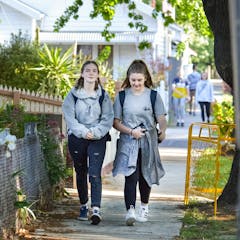
Articles on Liveability
Displaying 21 - 40 of 60 articles

Much of the growth in our cities is in the outer suburbs, now home to around 5 million people. And that creates problems like traffic that detract from the advantages residents see in living there.

Every year, our big cities vie for global liveability honours. But as well as differences between the cities, liveability varies widely within them, leaving plenty of work to be done.

The world’s “most liveable city” ranking is based on an index designed for companies sending their employees overseas. It’s not relevant to the average person.

We searched Instagram for city images people associated with happiness. And they consistently included similar features, such as water, nature and heritage buildings.

Community proposals for public swimming pools are popping up all over the country. But individuals need to work with governments to ensure these projects actually get off the ground.

Regional areas are expanding, and yet not enough attention is being paid to improving rail access to capital cities. This affects the liveability of the areas.

There’s no such thing as a one-size-fits-all plan for sustainable, healthy urban living. Urban diaries help identify what works – and doesn’t work – for tropical cities like Cairns or Townsville.

We spend on average about an hour a day travelling. Given this is unlikely to change, how can we make this time more productive and enjoyable?

Australian cities generally minimise negative attributes such as crime, segregation and violence, but developing positive attributes such as inclusivity appears more challenging.

The benefits of walking are widely promoted, but most Australian communities still aren’t walker-friendly. Young people, who rely heavily on walking to get around, are clear about what has to change.

Adaptively re-using buildings can preserve heritage while enabling new uses that help make cities more liveable and sustainable.

The secret of creating attractive, liveable places sounds deceptively simple: connect people to places, people to transport and people to people.

Residents often have concerns about informal green space but some still use it. Work to enhance these areas should aim to resolve these concerns without destroying what residents do value.

Traditionally, new communities first get hard infrastructure – schools, hospitals, transport – and ‘soft’ social infrastructure comes later. Liveability and public health suffer as a result.

Governments, developers and urban planners all aspire to create liveable cities. Yet when it comes to Australian cities, the rhetoric and reality don’t quite match.

The challenge of creating liveable communities across Australia’s capital cities comes down to seven key factors. And assessed on this basis, parts of our cities don’t fare so well.

Drains take up precious but inaccessible open space in our cities. Converting these to living streams running through the suburbs could make for healthier places in multiple ways.

While many talk about 30-minute cities, some aim for residents to be able to get to most services within 20 minutes. But cities like Melbourne have an awful lot of work to do to achieve their goal.

Australians are losing the backyards that once served as retreats from the stresses of city living. Our health is likely to suffer as cities become less green and much hotter.

Research shows planners and built environment professionals have surprisingly poor knowledge about how cities might harm mental health. The good news is that simple steps can make a big difference.





